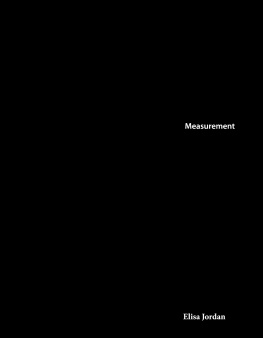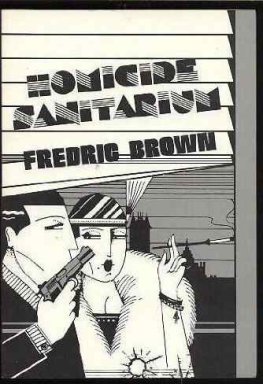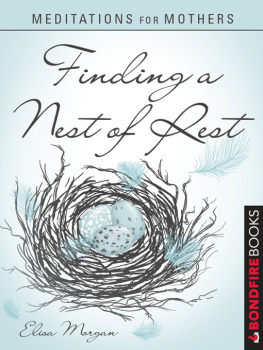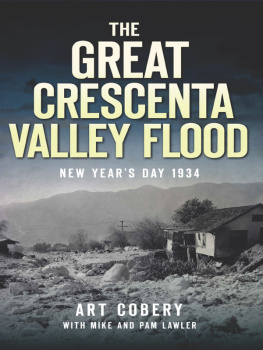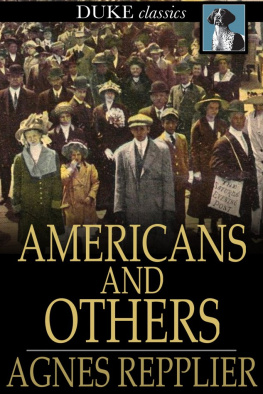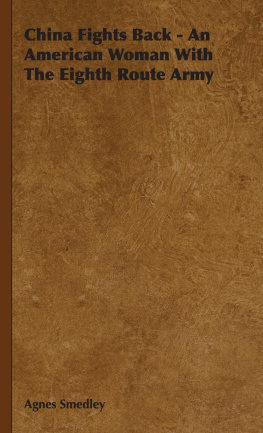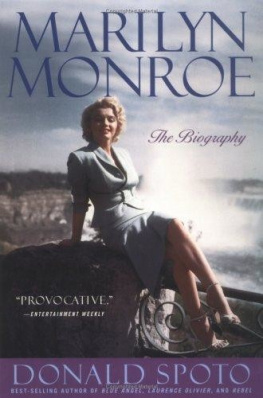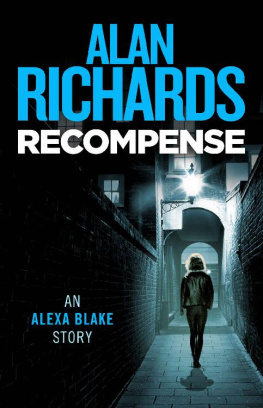Published by The History Press
Charleston, SC
www.historypress.com
Copyright 2018 by Elisa Jordan
All rights reserved
All images courtesy of the Friends of Rockhaven unless otherwise noted.
First published 2018
E-Book edition 2018
ISBN 978.1.43966.558.9
Library of Congress Control Number: 2018945794
Print edition ISBN 978.1.46713.879.6
Notice: The information in this book is true and complete to the best of our knowledge. It is offered without guarantee on the part of the author or The History Press. The author and The History Press disclaim all liability in connection with the use of this book.
All rights reserved. No part of this book may be reproduced or transmitted in any form whatsoever without prior written permission from the publisher except in the case of brief quotations embodied in critical articles and reviews.
This book is dedicated to Agnes Richards, Patricia Traviss and the entire staff, employees and residents who made Rockhaven special. Thanks to their devotion and kindness, they turned Rockhaven into a safe place for women to heal in safety and with dignity. In the process, they made history with a progressive approach to mental health, womens wellness and career opportunities for women. Gladys Monroe Baker deserves a mention because it was her story that originally brought me to Rockhaven. Without her, this book would never have happened. I would also like to dedicate this book to the Friends of Rockhaven, the next generation of dedicated people working to preserve this landmark for the future.
Contents
Acknowledgements
This book wouldnt be possible without the gracious help of the Friends of Rockhaven. This dedicated nonprofit group has single-handedly worked to preserve the property, legacy and future of Rockhaven Sanitarium. Their tireless efforts were an inspiration to me during the entire process of researching and writing this book. Id like to specifically thank Joanna Linkchorst and Mike Lawler for granting me access to their Rockhaven files, photos and research materials. They not only permitted me to go through the Rockhaven archives but also patiently answered questions, read drafts and were exceptionally supportive of me during the writing process. Thanks to my editor at The History Press, Laurie Krill, who guided me through the publishing process and helped me turn an idea into an actual book. She has been a rock through the entire experience. Thanks to Eve Adamson Minkler, my friend and fellow writer, whose advice I always take. Scott Fortner, Jackie Craig and April VeVea were enormously helpful with research. My friend Lynn Garrett looked at photos for me and helped give her expert advice. My cousin John Garside scanned photos for me. Thanks to my parents, Gene and Victoria Jordan, who have long supported my love of (and obsession with) literature, history and education. Our family road trips exploring local landmarks have had an enormous influence on me. And finally, thank you to my friends and family who have supported me and all my crazy ideas over the years. I am deeply humbled and grateful.
Introduction
My Rockhaven journey actually begins years ago while researching Marilyn Monroe. I had read about her mother Gladyss history of mental illness and hospitalization at a private sanitarium named Rockhaven. It was at Rockhaven that Gladys came to live as soon as Marilyns finances allowed. I never expected to actually see inside Rockhavens gates, but I immediately signed up when I saw that tours were offered of the now-historic landmark. That was May 2014, and little did I know that my life was about to change when I stepped foot onto the grounds.
As soon as I laid eyes on Rockhaven, it became clear that it was a place like no other. Although there was some peeling paint and withered flower beds, it still exuded a sense of tranquility. Seeing the property in person and learning of the facilitys progressive practices and importance to womens history brought to life a world I didnt know existed. I had to know more.
Agnes Richards was a German immigrant and single mother trying to earn a living to support her young son. With limited career options available to her, she worked her way through nursing school and found employment in state-funded mental hospitals. To Agnes, working in institutions became much more than just a job. She cared about her patients and sought to improve hospital conditions. She also provided jobs to women who, like her, found few options when it came to work opportunities.
My goal with this book is to document the story of Rockhaven from its inception through the glory days up to the present. That Agnes Richards founded a private sanitarium catering to female patients and employing a mostly female staff decades before the womens movement is itself an accomplishment. That it was so successful adds an extra element.
Chapter 1
A Short History
of the Crescenta Valley
The Crescenta Valley is a suburban community nestled among the San Gabriel Mountains to the northeast and the Verdugo Mountains and San Rafael Hills to the southwest. The San Gabriel Valley lies to La Crescentas southeast and the San Fernando Valley to the northwest. Though it is now a fairly typical suburb of Los Angeles, the areas history dates back thousands of years to a thriving Native American community. The Tongva (also called Gabrieleo) lived peacefully in the valley until the late 1700s.
European explorers first noticed what is present-day California in the 1500s, with the Spanish empire claiming the land in 1542. Sebastian Vizcaino later mapped the region for New Spain in 1602, though the Crown paid little attention to the area or its native inhabitants for generations. During this time, Californias native population was culturally and linguistically diverse, with more than seventy Native American groups settled in California. Estimates for the native population range from 100,000 to 300,000 depending on the source, but the one thing that is certain is the region was thriving. Although rich with resources, the land was difficult to access for outsiders, so Spain largely left California alone.
Life in California began to change under the rule of Charles III. With news making its way back to Spain of Russian fur traders in the remote colony, Charles decided to gain control of the region. In 1769, the first California mission was established. From that moment on, settlers and missionaries began making their way to the once largely ignored colony. Between 1769 and 1833, twenty-one missions would eventually line what is now the state of California. It was also the beginning of the genocide of native peoples in the region.
In 1784, the Spanish Crown granted 36,402 acres of land to Jose Maria Verdugo, a soldier who served at the San Gabriel Mission. The land grant bordered what is now the Arroyo Seco and Los Angeles River and included the modern-day Crescenta Valley, Glendale and parts of Burbank and the Verdugo Mountains, which were named in Verdugos honor. Corporal Verdugo retired from the army in 1798 and became a full-time rancher on his property, Rancho San Rafael. The rancho was inherited by Verdugos children after his death in 1831, but his heirs didnt hang onto the property for as long as their father. The land survived the Mexican-American War but didnt last much longer than that.


